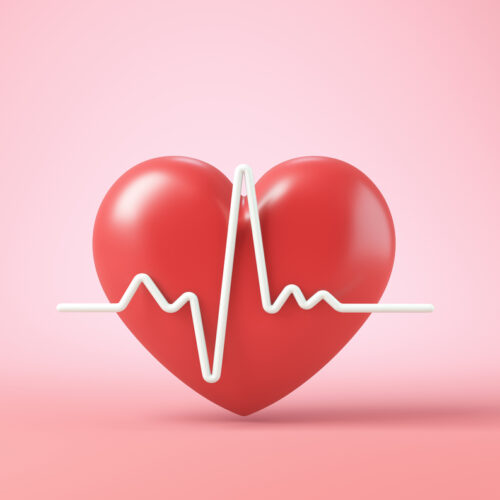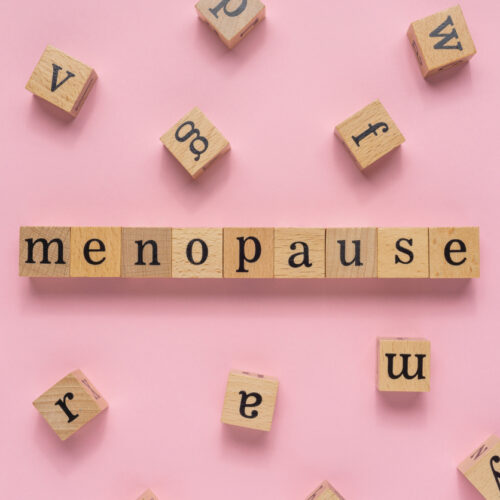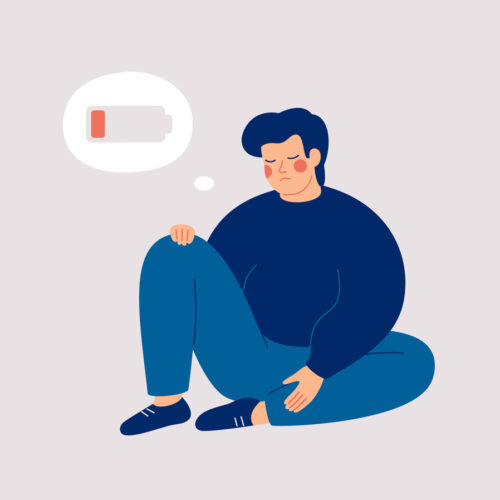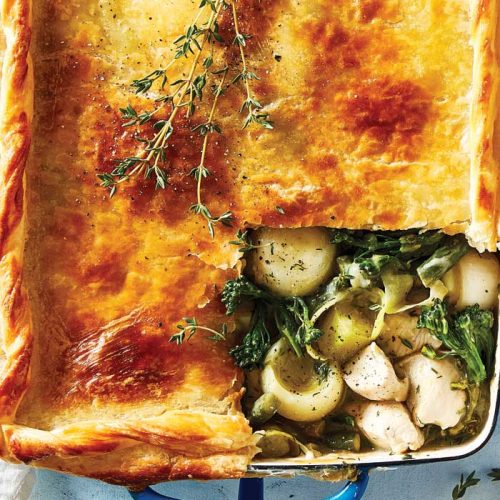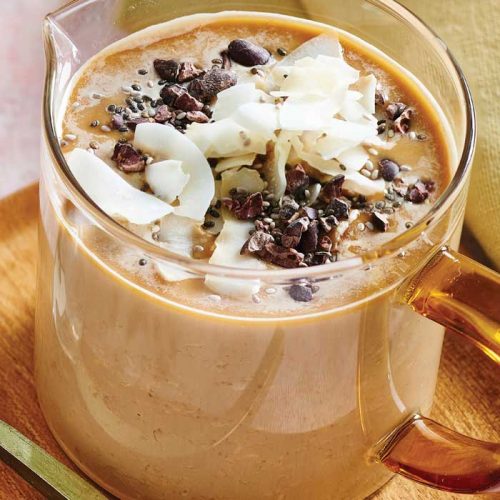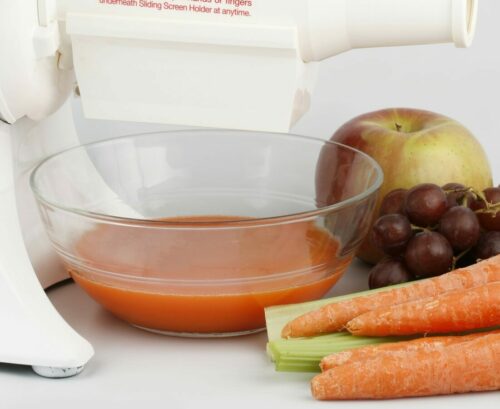
Health trends touted by social media influencers or celebrities can be compelling as ‘quick fixes’ for nutrition or weight management, but they aren’t always what they’re cracked up to be, and some do more harm than good. Freelance journalist Laura Day looks at eight common food trends that aren’t really that healthy.
1 Choosing food and drink labelled ‘no added sugar’
The World Health Organization (WHO) says we need to dramatically reduce the ‘free sugars’ in our diets (that includes sugar added to food, but also the kind that’s naturally present in honey, syrups and fruit juices). It recommends that less than 10 per cent of our daily calorie intake should come from free sugars – equivalent to around 12 level teaspoons.
No wonder, then, products labelled as having ‘no added sugar’ or ‘100% natural sugar’ look like the sensible choice. But beware: these claims don’t necessarily mean the product is low in sugar.
Ingredients such as honey, fruit juice, agave syrup, rice malt syrup and maple syrup (which count as free sugars) could actually mean the product is high in sugar, so consumption should be limited.
Get back on track
‘Always check the “of which sugars” value on nutrition panels, even on products labelled ‘no added sugar,’ advises registered dietitian and HFG expert Helen Bond. ‘If a food contains less than 5g sugar per 100g, and a drink less than 2.5g sugar per 100ml, you can be sure you’re choosing a product that’s low in sugar.’
2 Cutting out fat
If you do the maths, cutting back on fat is a good way to cut back on calories, too, if that’s what you want — after all, fat provides 9kcal per gram, compared to just 4kcal per gram from protein or carbohydrate. But trying to go fat free isn’t the best route to good health. Choosing low-fat foods doesn’t mean they’re healthier. ‘When going for a low-fat food you need to choose wisely,’ warns Helen. ‘Always question what they’ve replaced the fat with – check the nutrition label to ensure they haven’t just added extra sugar.’
Remember, some fats are essential for our body to function properly. For example, omega-3 fats (the type found in oily fish) are important for keeping our heart and brain healthy – that’s why experts recommend we eat one portion of oil-rich fish a week. Plus the fat in some natural foods comes packaged with fat-soluble vitamins A, D, E and K, nutrients that are vital for staying healthy. For example, vitamin A is important for skin and eye health.
The key is to choose foods that contain the right sort of fat (unsaturated) as well as a good dose of other nutrients – foods such as avocados, nuts, seeds and olive oil. Cakes, biscuits, chocolate, takeaways and pastries should be limited as they’re often high in cholesterol-raising saturated fat but low in vitamins and minerals.
Get back on track
Be selective about the low-fat foods you eat. Animal fats contain a high proportion of saturated fat, so it’s advisable to choose reduced-fat dairy products and lean meats. And limit all processed foods or ‘treats’ such as chocolate biscuits, even those marked ‘reduced fat’ – if the sugar content has been hiked up, they’re often just as unhealthy as the full-fat versions.
3 Snacking on rice cakes
You shun chocolate and biscuits in favour of rice cakes as a between-meal snack because it’s the healthier option, right? Not exactly… While there’s nothing wrong with rice cakes per se, they don’t bring much to the table in the way of nutrients, and they’ll leave you feeling hungry again soon due to their high glycaemic index (GI) and lack of fibre and protein.‘Snacks should be an opportunity to enhance your diet and keep you satisfied, rather than a quick stopgap,’ says Helen. ‘Instead of eating plain rice cakes, top one with protein-rich no added sugar or salt peanut butter or low-fat cottage cheese for a more nutritious, satisfying bite.’
Get back on track
Treat mid-morning and afternoon snacks as an opportunity to boost your nutrient intake. For instance, a kiwifruit will add fibre and vitamin C; Brazil nuts add selenium and healthy fats; low-fat yogurt adds calcium and protein; and veg sticks with hummus add fibre.
4 Thinking ‘raw’ means healthy
The raw food diet proved to be a big health trend. But while there’s a lot to be said for a diet based on fruit, vegetables, nuts and seeds, don’t assume all foods that toe this diet line will be lower in calories and sugar by nature. ‘It’s just as important to check out the nutrition information on “raw” treats as it is with non-raw treats,’ says Helen. ‘Raw honey is an ingredient that’s added to many raw treats, but it whacks up the calorie content. Plus it’s a free sugar, which we should be cutting down on.’
Many uncooked snack bars also contain a lot of dried fruit, nuts, seeds and cold-pressed oils, which again can hike up the calorie count. For example, a 35g Beond Organic Raw Choc Bar has 134kcal, 6.1g fat and 15.2g sugar, while a two-finger KitKat has 107kcal, 5.1g fat and 10.8g sugar. There’s still no good evidence to suggest the raw food diet is any better for us than one that includes cooked food.
Get back on track
Use the raw food concept as inspiration to eat more fresh fruit and veg, but be selective when choosing products branded ‘raw’, and eat them in moderation, like any treat.
5 Falling for the latest food fad
It’s easy to get caught up in the hype of the latest ‘miracle diet’ that promises good health as well as weight loss. You follow the rules to the letter, avoiding certain foods and, more often than not, massively restricting your overall intake. And once the pounds start to fall off, which invariably they do, you feel great! For a time… But then the limitations grow tedious and the diet unsustainable, so you find yourself back where you started – or possibly worse off. Research suggests cutting out or severely restricting a food group ultimately leads to cravings and over-consumption, and therefore weight gain.
‘By their very definition, diets have a start and endpoint, after which we are likely to slip back into our old eating habits,’ says Helen. ‘It’s much healthier to follow a more manageable eating plan, which you can stick to in the long term.’
Get back on track
While sustainable healthy eating and weight-loss plans differ from person to person, restrictive diets mess with everyone’s health. If you’d like some guidance, try following HFG’s weekly diet planner.
6 Blending and juicing everything
Recent years have seen liquid diets popularised by weight-loss success stories. For example, in the film Fat, Sick & Nearly Dead, Australian Joe Cross consumed nothing but fruit and vegetable juices for 60 days. For him, it worked as a kick-start to a new, healthy lifestyle. But living on nothing but juice for extended periods is generally ill-advised.
‘While juices are great for supplementing our diets with extra nutrients, it’s not wise to replace all meals with juices,’ says Helen. ‘Not only will you miss out on fibre from not eating the solid food, but also on chewing, which is important for satiety.’ Plus drinking large amounts of fruit-based juice will pack sugar into your diet. Good health isn’t just about what we feed our bodies, either. ‘Being able to sit down for a meal with family and friends is just as important for wellbeing as the food we eat,’ says Helen.
Get back on track
Juices can be an easy way to boost our fruit and vegetable intake, but they only count as one of our five-a-day, no matter how much we drink. Stick to a maximum serving of one 150ml glass a day.
7 Choosing to go dairy free
The media have linked cow’s milk with an array of health conditions, from cancer and heart disease to allergies and catarrh. But look beyond the headlines and most nutrition experts agree that rather than being bad for us, dairy products are an important part of a healthy diet, thanks to the wide range of nutrients they provide.
‘Ditching dairy means you’ll miss out on a range of nutrients including protein, B vitamins and phosphorus,’ warns Helen. ‘Plus milk, cheese and yogurt are the main providers of calcium in our diets, which is vital for strong bones.’
Global data show many countries’ populations have calcium intakes below the minimum amount recommended for good health, especially among women. Added to this, 200 million people worldwide have osteoporosis, a condition where bones are so fragile they can easily break. A low calcium intake, especially in childhood and the teenage years, is thought to be a key contributor, as bones are unable to reach their full strength in adulthood.
Get back on track
If you do decide to go dairy free, make sure you eat plenty of other calcium-rich foods: tinned fish with edible bones (such as sardines), beans, nuts, green leafy vegetables, oranges and calcium-fortified soy products.
8 Denying yourself all treats
Deciding to manage weight by never eating so-called ‘naughty’ foods again? Good luck with that! Yes, there’ll be some things you can live without but, for most of us, being able to enjoy the occasional treat is a more sustainable health strategy than total deprivation. ‘It comes back to the mantra: everything in moderation,’ says Helen. ‘I’m a great believer in the 80/20 rule, whereby if 80 per cent of the time you eat a healthy diet, you can enjoy treats 20 per cent of the time.’
Get back on track
Eat treats mindfully: focus on what you’re eating and savour each mouthful. This will help make food more satisfying, which means you’ll be less likely to overeat.
Article sources and references
- E. M. Balk, et al. Global dietary calcium intake among adults: a systematic review. October 2017Osteoporosis International 28(Suppl 2) DOI: 10.1007/s00198-017-4230-xhttps://www.researchgate.net/publication/320362626_Global_dietary_calcium_intake_among_adults_a_systematic_review
www.healthyfood.com




